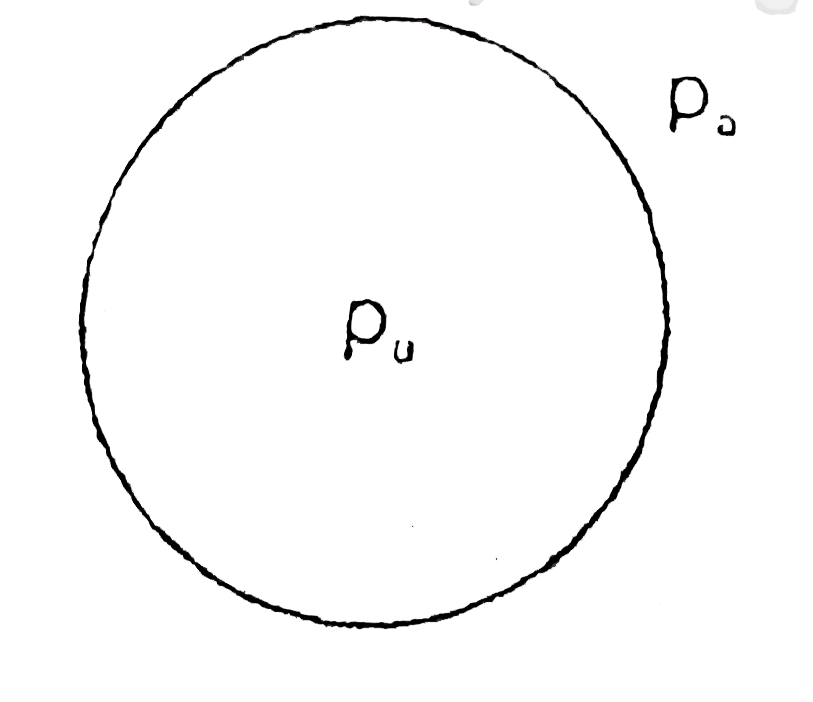An isolated and charged spherical soap bubble has a radius ‘ r ‘ and the pressure inside is atmospheric. If ‘ T ‘ is the surface tension of soap solution, then charge on drop is:
2√2rTε0
8πr√2rTε0
8πr√rTε0
8πr√2rTε0
The correct Answer is:B
Inside pressure nust be 4Tr greater then outside pressure in bubble. This excess pressure is provided by charge on bubble.

4Tr=σ22ε0
4Tr=Q216π2r4×2ε....[σ=Q4πr2]
Q=8πr√2rTε0.
Topper's Solved these Questions
- DAILY PRACTICE PROBLEMBOOK - RESONANCE ENGLISHCHAPTER - DAILY PRACTICE PROBLEMEXERCISE - DPP No.46
11 Videos
- DAILY PRACTICE PROBLEMBOOK - RESONANCE ENGLISHCHAPTER - DAILY PRACTICE PROBLEMEXERCISE - DPP No.47
20 Videos
- DAILY PRACTICE PROBLEMBOOK - RESONANCE ENGLISHCHAPTER - DAILY PRACTICE PROBLEMEXERCISE - DPP No.44
10 Videos
- CURRENT ELECTRICITYBOOK - RESONANCE ENGLISHCHAPTER - CURRENT ELECTRICITYEXERCISE - High Level Problems (HIP)
19 Videos
- ELECTRO MAGNETIC WAVESBOOK - RESONANCE ENGLISHCHAPTER - ELECTRO MAGNETIC WAVESEXERCISE - Exercise 3
27 Videos
Similar Questions
When a soap bubble is charged :-
View SolutionThe excess pressure inside a soap bubble of radius R is (S is the surface tension)
View SolutionAir is pushed into a soap bubble of radius r to double its radius. If the surface tension of the soap solution is S, the work done in the process is
View SolutionA charged soap bobbe having surface charge density σ and radius r. If the pressure inside and outsides the soap bubble is the same, then the surface tension of the soap solution is
View SolutionTwo soap bubbles of radii a and b coalesce to form a single bubble of radius c. If the external pressure is P, find the surface tension of the soap solution.
View SolutionA soap bubble of radius 'r' is blown up to form a bubble of radius 2r under isothemal conditions. If σ be the surface tension of soap solution , the energy spent in doing so is
View SolutionIf R is the radius of a soap bubble and S its surface tension, then the excess pressure inside is
View SolutionTwo identical soap bubbles each of radius r and of the same surface tension T combine to form a new soap bubble of radius R. The two bubbles contain air at the same temperature. If the atmospheric pressure is p0 then find the surface tension T of the soap solution in terms of p0, r and R. Assume process is isothermal.
View SolutionTwo spherical soap bubble collapses. If V is the consequent change in volume of the contained air and S in the change in the total surface area and T is the surface tension of the soap solution, then it relation between P0,V,S and T are λP0V+4ST=0, then find λ ? (if P0 is atmospheric pressure) : Assume temperature of the air remain same in all the bubbles
View SolutionA soap bubble of radius R has formed at normal temperature and pressure under isothermal conditions. Complete the work done. The surface tension of soap solution is T.
View Solution
